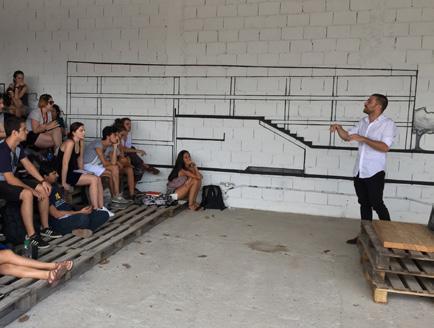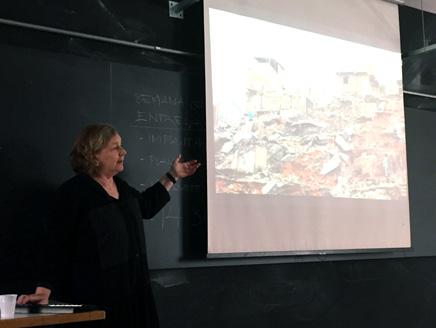
3 minute read
Housing
HOUSING
During the workshop, Taubman College Team students heard from housing experts in the City of São Paulo, Brazil. The first speaker related to housing was Mário Reali. From 2009-2012 he served as mayor for the city of Diadema, which is located in the São Paulo Metropolitan Area. He is currently a public servant for the City of São Paulo and serves as a mentor and champion of the new housing plan. He explained the history of municipal and federal housing policies in Brazil. First, he discussed the 1988 Federal Constitution. This Constitution introduced multiple changes, such as conceptualizing social function of urban land and introducing the right to a healthy environment. As a result, the City Statute, a federal law passed in 2001, served as the enabling legislation to implement the urban planning tools relevant to social housing.
The National Housing Plan, or PlanHab, projected that there would be a demand of 35 million housing units between 2008 and 2023. The future demand generated by natural population growth and new household formation is estimated at 27 million units, including the need to urbanize thousands of favelas where 15 million people live. In Brazil, 85% of the deficit is in cities and 85-90% of it is related to families with an income equal to or less than three minimum wages (the minimum wage was R$510 [$275 USD] in 2011). Given the reality of informal settlements, the government commenced Programa de Alceleração do Crescimento (Growth Acceleration Program) (PAC) in 2007. PAC has a slum-upgrading scheme for Brazil and the São Paulo Metropolitan Area to improve public and private investments in large-scale infrastructure projects. Municipalities or states are direct users of the funds, which they use to apply for work procurement and project execution, usually through bidding processes.
As a response to the housing deficit and inequity, Brazil established a new social housing program, “My House, My Life.” This programed aims to create jobs in the construction sector in an effort to combat the 2008 global financial crisis. It also increases the housing stock for
81 Fernando Botton. 82 Pep Pons.

the most impoverished, who earn between 0-3 minimal wages and working classes who earn between 3-6 minimal wages (Reali, 2017). Reali described a 16 year-long plan, which will reduce social rental vouchers and replace it with temporary housing. Ocupação Anchieta is a potential site for temporary housing. Instituto Anchieta Grajaú envisions using the property as a career development, permaculture, and educational hub for communal living on a temporary basis.
Elizabete França holds a master degree from Faculdade de Arquitetura e Urbanismo da Universidade de São Paulo (Architecture and Urbanism College, University of São Paulo) and Machenzie Presbiterian University, with more than 25 years of experience in urban, environmental, housing, and participatory projects. The program is considered a milestone in introducing social housing as an issue of national importance for governmental policy and action. The municipality received $300 million USD from the Inter-American Development Bank for the upgrading efforts, and 50,000 housing units were constructed under this program in São Paulo from the late 2000s to early 2010 (França, 2017).
In São Paulo, 30% of the population lives in favelas that constitute 9% of the land (Leite, 2017). In an attempt to upgrade informal settlements, different organizations collaborate in diverse experimental projects for new housing design. These projects mainly focus on improving the quality of space and density in the favela. The Municipality of São Paulo started an upgrading program in 2005, which foresees exemplary project implementations by international renowned architecture firms that introduce new strategies for informal cities (Pons, 2017).
Persons who suffer from tenure insecurity and fear of eviction, like residents in Ocupação Anchieta, participate in Atividades em Paraisópolis (Activities in Paraisópolis) and other social movements. They try to map the legal cases of eviction and pressure the government for better affordable housing in the city (Rolnik, 2017).

83 Elizabete França. 84 Monica Mation.







